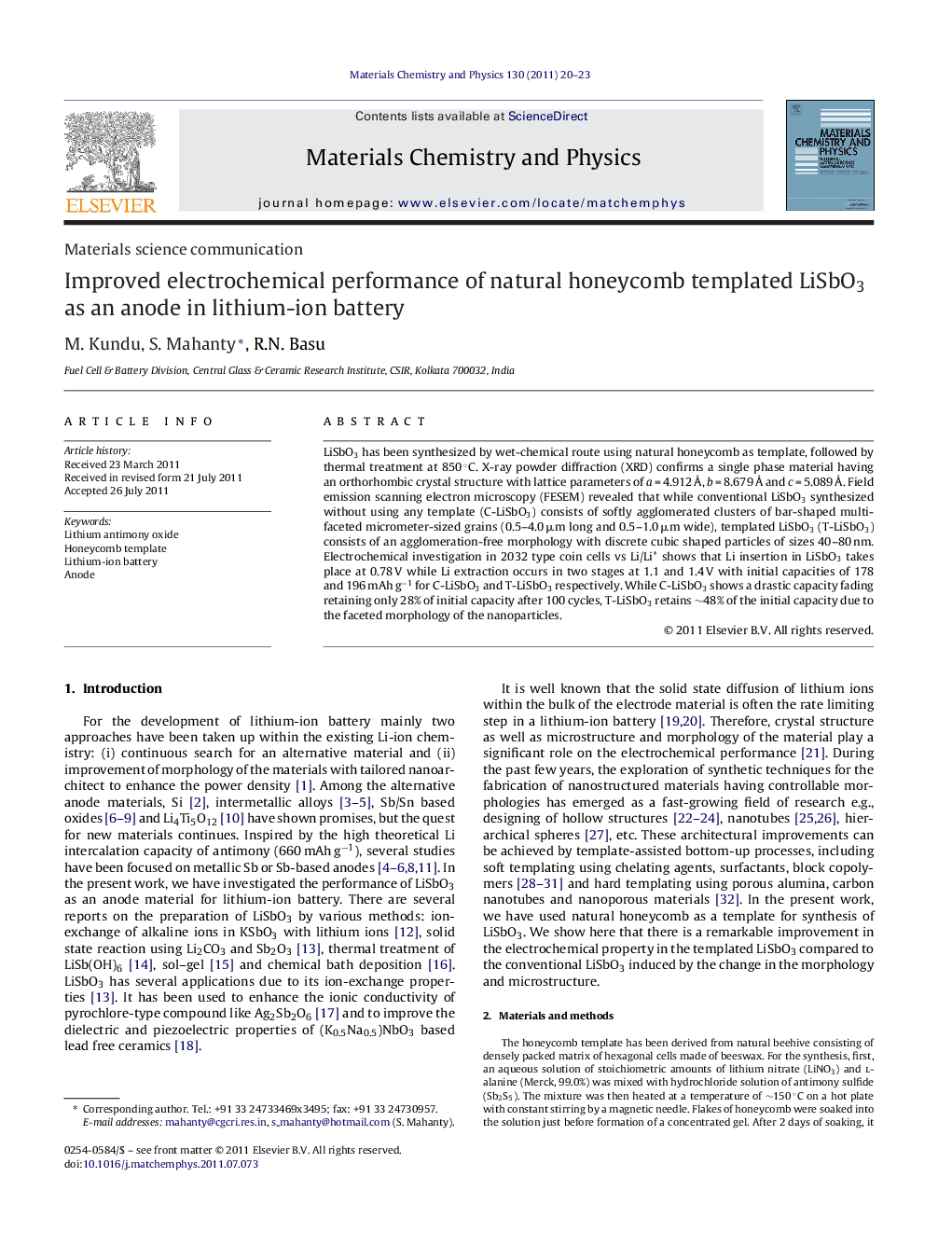| Article ID | Journal | Published Year | Pages | File Type |
|---|---|---|---|---|
| 1524260 | Materials Chemistry and Physics | 2011 | 4 Pages |
LiSbO3 has been synthesized by wet-chemical route using natural honeycomb as template, followed by thermal treatment at 850 °C. X-ray powder diffraction (XRD) confirms a single phase material having an orthorhombic crystal structure with lattice parameters of a = 4.912 Å, b = 8.679 Å and c = 5.089 Å. Field emission scanning electron microscopy (FESEM) revealed that while conventional LiSbO3 synthesized without using any template (C-LiSbO3) consists of softly agglomerated clusters of bar-shaped multifaceted micrometer-sized grains (0.5–4.0 μm long and 0.5–1.0 μm wide), templated LiSbO3 (T-LiSbO3) consists of an agglomeration-free morphology with discrete cubic shaped particles of sizes 40–80 nm. Electrochemical investigation in 2032 type coin cells vs Li/Li+ shows that Li insertion in LiSbO3 takes place at 0.78 V while Li extraction occurs in two stages at 1.1 and 1.4 V with initial capacities of 178 and 196 mAh g−1 for C-LiSbO3 and T-LiSbO3 respectively. While C-LiSbO3 shows a drastic capacity fading retaining only 28% of initial capacity after 100 cycles, T-LiSbO3 retains ∼48% of the initial capacity due to the faceted morphology of the nanoparticles.
► LiSbO3 powders are synthesized by using honeycomb from natural beehive as template. ► Agglomeration-free morphology with discrete cubic shaped 40–80 nm particles. ► Electrochemically active anode in lithium-ion coin cells. ► Improved capacity retention and rate performance in templated LiSbO3.
